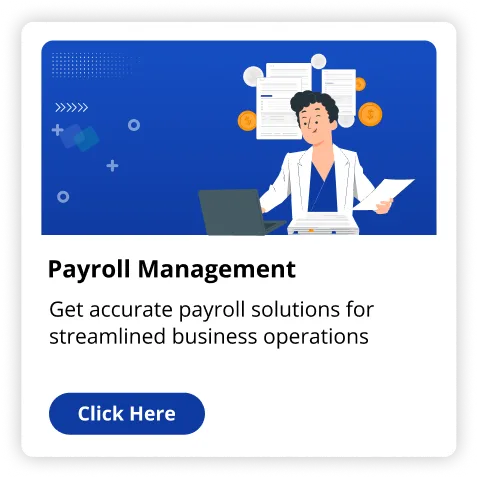Businesses based in the U.S these days prefer e-filing their taxes. Keeping up with the evolving tech and digitising the filing of your taxes helps in reducing the hassle of managing traditional paper forms .This blog will walk you through the entire e-filing procedure. Will explain the importance of e-filing, how to file taxes, the steps involved and ensure compliance in the process. Understanding the whole e-filing process will help you save money,time and be beneficial for your business.
Keeping it digital: How to E-file sales tax
Businesses are essential in collecting and submitting sales taxes, which are a vital source of funding for municipal and state governments. The IRS and state tax agencies hope to increase efficiency and reduce errors in the revenue tax filing process by adopting e-filing. You ought to reflect about e-filing for these causes:
- Time Efficiency: Electronic filing of returns takes fewer hours than manual filing. As opposed to spending hours with paperwork, you may file tax returns online in just a couple of minutes.
- Accuracy: A lot of e-filing systems come with inbuilt error-checking features that help guarantee accurate filing by reducing mistakes.
- Security: Encryption technology is used during e-filing to safeguard your personal tax and business data.
- Instant Confirmation: You get instant reassurance that the tax return has been received and submitted when you file digitally.
- Simplified Record Keeping: Businesses should file taxes digitally as it helps in keeping it safe. It is easier to manage than physical copies of returns
The step-wise process: How to properly E-file sales tax?
There are many steps associated with filing sales tax electronically, from enrolling with the relevant state office to actually submitting the form. This comprehensive guide will assist you in understanding the procedure.
Register with the Department of Revenue in Your State
You have to sign up with the state's Department of Revenue (DOR) before you can digitally file your sales tax returns. Businesses must register with their state for taxes utilising an approach unique to that state.
Typically, this entails:
- Giving your Employer Identification Number (EIN) out.
- sending details on your business, like its name, location, and mode of operation.
- indicating the frequency at which you plan to file sales tax returns (quarterly, monthly, or yearly).
- You will get a sales tax permit number upon enrolment, which you must use for submitting your returns.
Determine Your Filing Frequency
How often you file is decided by how much sales tax your business is able to collect. States typically employ all of your taxable sales for determining this. Bigger businesses may be obligated to file monthly, while smaller businesses may just require registration annually or quarterly.
Integration: Compiling your sales data
Prior to e-filing, you must gather what follows sales data: - The total sum sold during the specified period frame. Total sales that are taxable.
- Sales tax which is gathered from customers.
- Any restrictions or deductions. As you ready to enter this data into the digital file system, make sure it is well-organised.
Choosing the right software:Checking compatibility
Every state has a unique e-filing platform for sales taxes, which are usually accessible via the Department of Revenue website. In addition, some states permit you to access third-party websites to file sales tax returns electronically.
- Log in to your account with your sales tax permit number.
- Select the option to file a sales tax return.
- Enter the sales data you have gathered, making sure to double-check for accuracy.
- Submit the return electronically.
Paying on time
You will have to make the necessary payment after filing the sales tax return. You can pay right away through the site using a credit card, debit card, or Automated Clearing House (ACH) transfer with a majority of state e-filing systems. To prevent penalties, ensure that you review the payment dates in your state.
Verification is the key
The state's Department of Revenue ought to issue you an electronic confirmation after you file and pay. This confirmation demonstrates your early filing; keep a copy for your records.
The legal battle: Maintaining compliance when E-filing
Although e-filing improves the process simpler, ensuring compliance is crucial for avoiding fines and audits.
The suggestions that follow can help to ensure a seamless filing procedure:
- File on Time: Failing to meet requirements may result in fines, penalties, or interest from the state. According to the frequency of filing you were allocated, set up reminders for deadlines.
- Keeping up-to-date records: For every reporting period, keep thorough sales records. This will help in properly documenting taxable sales and ensuring the validity of all exclusions and deductions. Inspect Prior to Sending: Before filing, double-check the return to make sure all the information is correct. Even a small error may trigger delays or audits.
- Be knowledgeable: Depending on the state, sales tax rates and laws can vary often. It's important to keep up with what is most recent tax regulations that may affect your business.
Final Thoughts
In the United States, submitting sales tax returns is an easy method that saves businesses time, eliminates errors, and guarantees compliance with state tax laws. You can easily fulfil your tax demands by registering with the Department of Revenue in your state, collecting your sales data, and completing the instructions to e-file correctly and on time. Using electronic filing systems also helps you maintain digital records, reduces the chance of mistakes, and offers instantaneous verification of your submission. Sales tax e-filing can be designed to work seamlessly as part of the procedures of your business if you possess the necessary resources and expertise. Outsourcing tax preparation to the team of experts in Fino Partners is a smart move for the success of your business.







.webp)



















